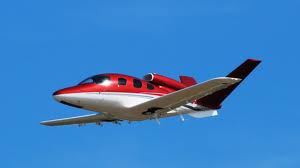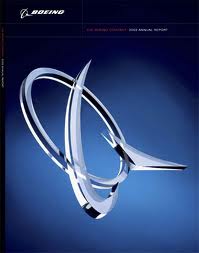Bombardier Aerospace announced today that Geneva-based PrivatAir has placed a firm order for five
CS100 airliners and has taken options on an additional five
CS100 aircraft. Based on the list price for the
CS100
aircraft, the firm order contract is valued at approximately $309
million US, and could increase to $636 million US if the five options
are exercised.
PrivatAir was founded more than 30 years ago
and operates a large fleet of commercial and business aircraft to
provide private charter and private airline services. Its specialized
services include exclusively business class flights on behalf of several
major network airlines. As a superb example of the versatility of the
world’s only all-new aircraft in its segment, the
CSeries aircraft acquired by PrivatAir will be delivered in an all-business class configuration.
“The
CSeries aircraft represent cutting-edge technology and are true 21
st century jetliners,” said Greg Thomas, President and Chief Executive Officer, PrivatAir. “The
CS100
jetliner is very well suited for our route expansion plans and we look
forward to introducing this very modern aircraft into our fleet.”
“The
CSeries aircraft program keeps growing and we have now announced our 11
th customer,” said Guy C. Hachey, President and Chief Operating Officer, Bombardier Aerospace. “The
CSeries
family of aircraft is designed for operational flexibility and many
airlines around the world, like PrivatAir, are very much aware of how
the aircraft can meet their future plans. Our global push, as well as
the superior performance benefits of the
CSeries aircraft, will
ensure that Bombardier will capture a significant portion of the 100- to
149-seat market segment over the next twenty years.”
“Included among the 11 customers that have selected the
CSeries
aircraft are major network carriers, national carriers, premium
airlines serving city centre airports, a low-cost airline, leasing
companies and now, with the order from PrivatAir announced today, a full
service provider to airline partners,” said Philippe Poutissou, Vice
President, Marketing, Bombardier Commercial Aircraft. “This diversity of
customers speaks volumes about the flexibility of the
CSeries aircraft family to meet air transport requirements worldwide.”
Designed for the growing 100- to 149-seat market, the 100 per cent new
CSeries family
of aircraft combines advanced materials, leading-edge technology and
proven methods to meet commercial airline requirements in 2013 and
beyond.
Powered by Pratt & Whitney Pure Power PW1500G engines, the
CSeries aircraft family will offer a 15* per cent cash operating cost advantage and a 20* per cent fuel burn advantage. The
CSeries family
of aircraft’s clean-sheet design will enable the aircraft to achieve
greatly reduced noise and emissions, as well as superior operational
flexibility, exceptional airfield performance and a range of 2,950 nm
(5,463 km). The
CSeries aircraft will be up to 12,000 lbs (5,443
kg) lighter than other aircraft in the same seat category and will
provide passengers with a best-in-class, widebody cabin environment in a
single-aisle aircraft.
Including the order from PrivatAir announced today, Bombardier has booked firm orders for 138
CSeries airliners. Other customers include Republic Airways (40
CS300 aircraft), Deutsche Lufthansa AG (30
CS100 aircraft), Lease Corporation International Group(17
CS300 and three
CS100 aircraft), Korean Air (10
CS300 aircraft), Braathens Aviation
(five
CS100 and five
CS300 aircraft), an unidentified major network carrier (10
CS100 aircraft),
an unidentified European customer (10
CS100 aircraft) and a well-established, unidentified
airline (three
CS100 aircraft).
The
CSeries aircraft program has also booked options for
124 aircraft and purchase rights for 10 aircraft from these customers, as well as Letters of Intent for up to
30
CSeries aircraft from Ilyushin Finance Co, and for up to 15
CS300 aircraft from Atlasjet.
Bombardier Aerospace Media






















